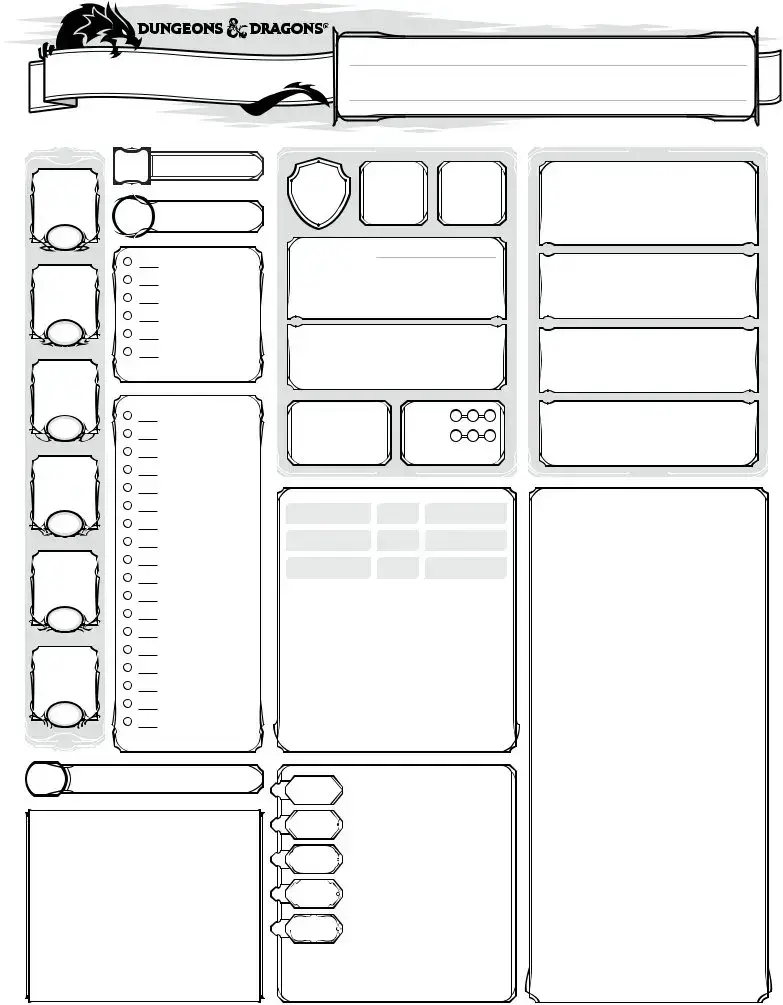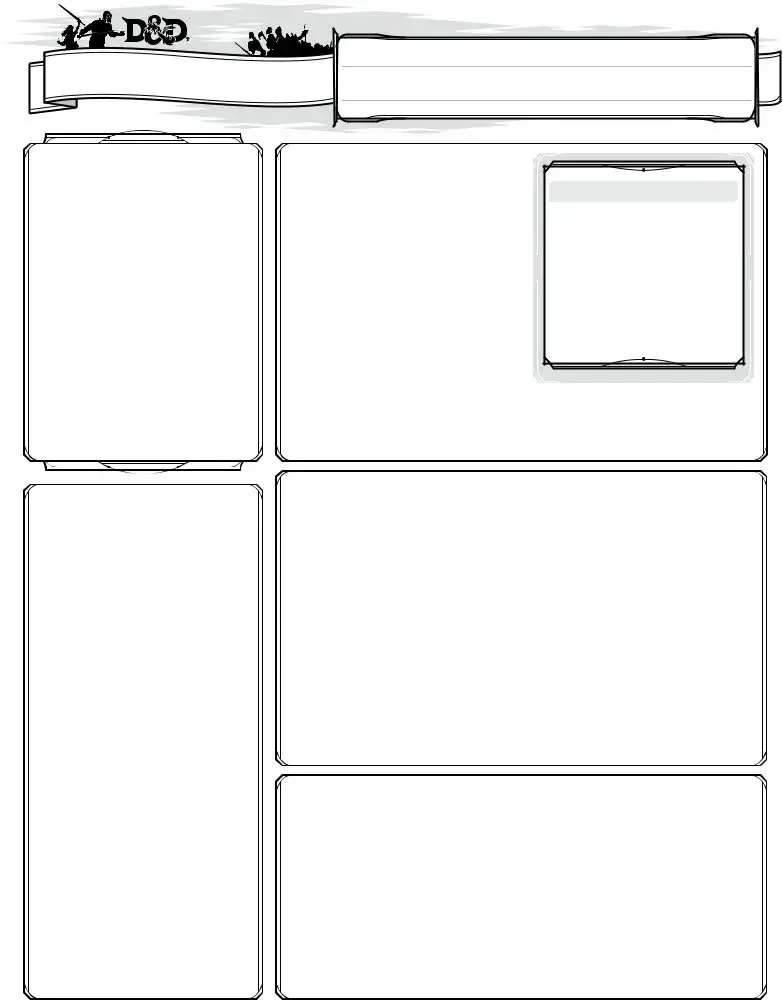The Dungeons & Dragons Character Sheet serves as a versatile record for players to encapsulate their character's attributes, skills, and backstory. Similar to a personal resume, it highlights an individual's key skills, education, and experience. Just as a resume lets potential employers understand your qualifications at a glance, the character sheet allows players and the Dungeon Master to quickly assess a character’s capabilities and narrative context in the game world.
Another document akin to the character sheet is a medical history form. This form collects crucial information regarding a patient’s past health, medications, and allergies. Similarly, the character sheet encapsulates vital statistics and backstory details, ensuring that the player has the necessary information for role-playing and combat scenarios. Both documents represent a compilation of important data that can significantly impact future actions.
The user manual or instruction guide for a device bears resemblance as well. These manuals guide users through setup and operation, specifying every function and feature at hand. Much like these manuals, the character sheet lays out the rules governing a player's abilities, spells, and actions. When the game is in progress, players refer back to their sheets just as one might consult a manual when troubleshooting a device.
In the realm of academia, a course syllabus shares similarities with the character sheet too. A syllabus outlines course objectives, requirements, and grading criteria, much like a character sheet details what a character can do and what is expected of them. Both documents serve as foundational tools, guiding users in their journey—be it through a course or through the challenges posed in a role-playing campaign.
Insurance policy documents also mirror the character sheet in that they provide a comprehensive overview of coverage and provisions. While the character sheet lists abilities, skills, and items, an insurance policy enumerates coverage details and limits. In both cases, the documents safeguard against potential pitfalls. Players rely on their character sheets to navigate perilous encounters, much like policyholders rely on their documents during emergencies.
A budget or financial statement serves as another comparable document, encapsulating income, expenses, and savings. The character sheet essentially tracks the resources available to a character, such as hit points and gold. Just as a budget informs individuals about their financial capacity, a character sheet informs players about their strategic choices based on available resources and skills.
A project management plan holds a parallel too, outlining tasks, assignments, and timelines. In a similar fashion, the character sheet maps out a player’s journey through levels and experiences, providing a clear understanding of what tasks or encounters the character can undertake. Both documents help keep objectives organized and facilitate progress through complex challenges.
Finally, a personal diary or journal is comparable in some ways. A diary captures daily experiences, emotions, and goals, reflecting the individual's journey over time. The character sheet also documents a character’s growth, showcasing their development through experience points and evolving abilities. Just as diaries allow for reflection and insight, character sheets enable players to chart their trajectory within the fabric of the narrative they are weaving.













